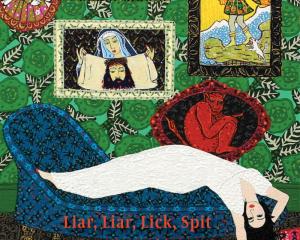Eric McCormick used the telling description ‘‘femme du monde'' for the Dunedin-born painter Frances Hodgkins as she was in 1912, having by then established herself as a professional artist and teacher in Europe, and a reputation as an ‘‘advanced'' painter.
McCormick probably meant the term in the sense of a ‘‘woman of the world'' rather than a ‘‘society woman''; she had lost, at 44, he said, any last traces of colonial gaucherie.
In choosing to use the expression in the title of her book, Alexa Johnston has emphasised Hodgkins' place not as a New Zealand or even a Dunedin-born artist, but as an artist of the world.
It rather sharpens the point of the book's function, which I take to be making the first permanent record in print of the collection of Frances Hodgkins paintings and drawings held by the Dunedin Public Art Gallery and other public institutions in the city.
It is not and was not, I think, intended to be an authoritative study of the artist or her work - there are plenty of those available - but it is more an elaborate catalogue mainly of the holdings in the DPAG collection, enhanced with thoroughly researched descriptions of the paintings and their origins.
Brief essays place the artist's development and major life events in the context of the works and the times, and the student of Hodgkins will yet again experience something approaching amazement that she achieved so much against such odds.
The book will help draw a veil over the initial resistance to the desire, eloquently expressed in these pages by Marshall Seifert in 2001, that the relocated DPAG should have a dedicated section in which the life and works of Dunedin's most famous international artist could be properly laid before the public.
He argued that the city was hiding what could be a major tourist attraction as the place where the artist was born and educated, and proposed a walk-through area that showed a small number of her works and those of her father's and her contemporaries in England, accompanied by a film on her life.
But the then director, Priscilla Pitts, initially disagreed, telling the Dunedin City Council there were also conservation issues which would limit the permanent display of her works. Other significant artists such as Ralph Hotere, Colin McCahon and Grahame Sydney, had Dunedin connections, she argued, which posed the question why Hodgkins should be singled out.
Fortunately, good sense prevailed and the dedicated section has been a successful venture.
The gallery itself does not have a huge number of works by the artist - just over 50 are depicted in this book - and most of them are watercolours (which does indeed present special conservation challenges).
But this exemplary catalogue will do much to bring its collection and the holdings at the Hocken Library, Olveston and the University of Otago to a wider audience, and enable locals and visitors to, as it were, take their own collection home.
The book is quite well designed - handsomely done, in fact - although I question the choice of using a detail rather than the full image from a painting held by the Hocken as the front jacket illustration, and the variations in the typefaces and type sizes in the text are both fashionably fussy and inconsistent.












